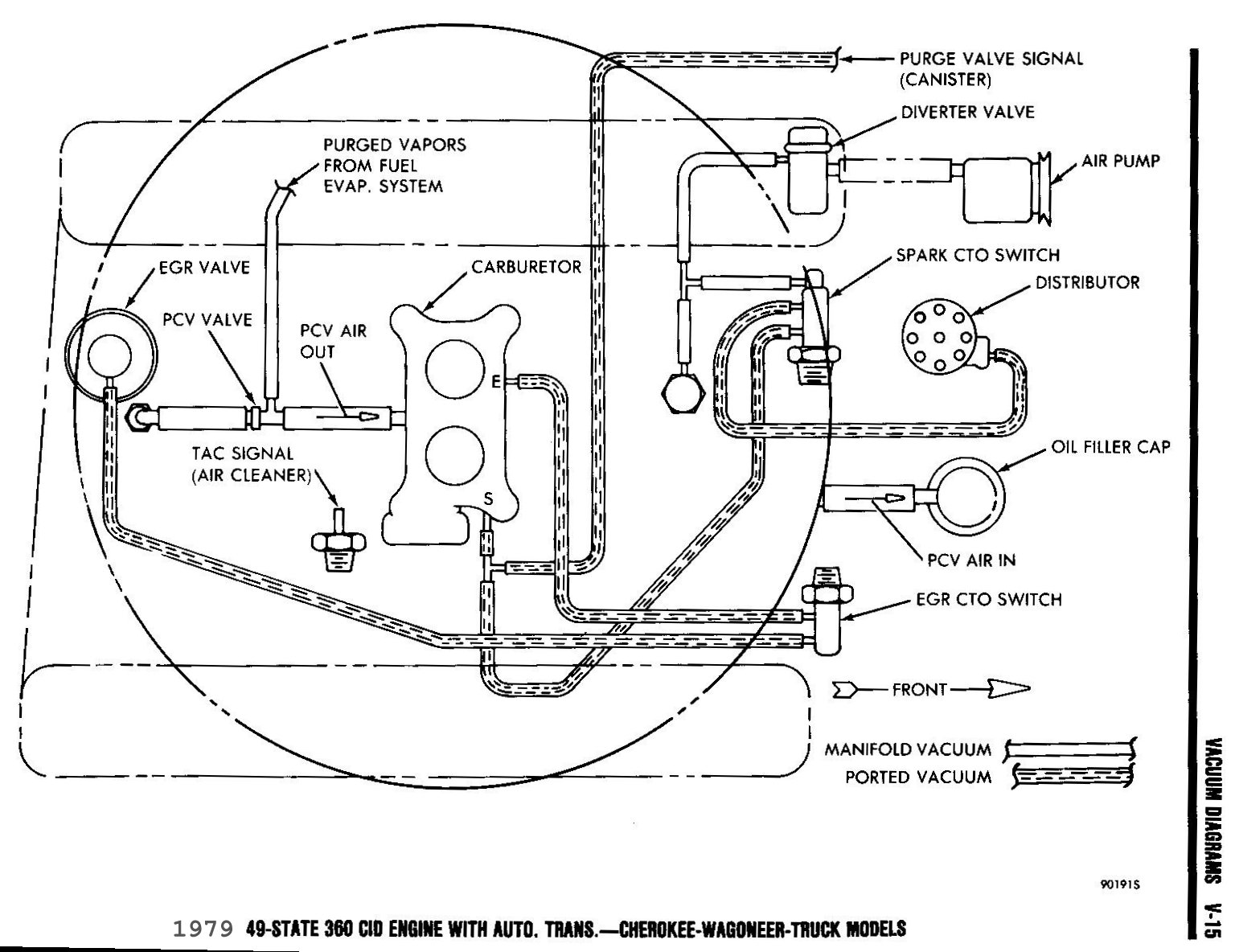I know there are a million threads about this, I've read tons. So I am setting my vehicle back up with factory settings, it's a 79 49 state Wagoneer with 360 and auto transmission.
I did not have the original EGR, but I went with 32187391 which had the 881 stamped on it because I found many people who said that is what would be on a 79 Wagonner for 49 state, so I went with it.
So I went with the ACDelco 2141428
I got two new CTO's and installed them, hooked all new vacuum lines up correctly.
I got a new vapor canister, hooked it all up correctly.
I set my timing to 8 degrees, maybe it was closer to 9 degrees, but it was below the 10 degree mark.
I set my idle pretty close, wasn't all the way warmed up so ends up it probably was not perfect, need to do it better later, but it was 600 RPM in drive, just when it was a little cold.
My idle mixture screws and choke are probably not perfect, but I'm rebuilding another 2150 that I plan to put on this weekend, so I will get it perfect then, but I think it's all really close.
So when driving, from a stop, there is an immediate dead spot. It is not bad enough that the engine would die or anything, but it's noticeable. It's also not there every single time, you have to start really slow and you can feel it. If you hit it hard you don't feel it as much.
So I verified the CTO for the EGR was working correctly, no vacuum at idle and once warmed up, ported vacuum.
So today I added a vacuum delay valve, the black/purple kind the newer Grand Wagoneers used.
That got rid of the dead spot and I do not have any pinging.
My question is the 79 and engine sticker does not have the vacuum delay and I was trying to match it.
Is there any tuning I can do? Would idle mixture screws not being perfect effect the take off from stop?
I used the orifice washer that the EGR said to use for Jeep, but could one of those being too large cause this?
Thoughts?
I plan to just leave the vacuum delay for now. They added it in 80 but that EGR was the fancier one with the back pressure sensor and regulator thing that 79 did not have.

I did not have the original EGR, but I went with 32187391 which had the 881 stamped on it because I found many people who said that is what would be on a 79 Wagonner for 49 state, so I went with it.
So I went with the ACDelco 2141428
I got two new CTO's and installed them, hooked all new vacuum lines up correctly.
I got a new vapor canister, hooked it all up correctly.
I set my timing to 8 degrees, maybe it was closer to 9 degrees, but it was below the 10 degree mark.
I set my idle pretty close, wasn't all the way warmed up so ends up it probably was not perfect, need to do it better later, but it was 600 RPM in drive, just when it was a little cold.
My idle mixture screws and choke are probably not perfect, but I'm rebuilding another 2150 that I plan to put on this weekend, so I will get it perfect then, but I think it's all really close.
So when driving, from a stop, there is an immediate dead spot. It is not bad enough that the engine would die or anything, but it's noticeable. It's also not there every single time, you have to start really slow and you can feel it. If you hit it hard you don't feel it as much.
So I verified the CTO for the EGR was working correctly, no vacuum at idle and once warmed up, ported vacuum.
So today I added a vacuum delay valve, the black/purple kind the newer Grand Wagoneers used.
That got rid of the dead spot and I do not have any pinging.
My question is the 79 and engine sticker does not have the vacuum delay and I was trying to match it.
Is there any tuning I can do? Would idle mixture screws not being perfect effect the take off from stop?
I used the orifice washer that the EGR said to use for Jeep, but could one of those being too large cause this?
Thoughts?
I plan to just leave the vacuum delay for now. They added it in 80 but that EGR was the fancier one with the back pressure sensor and regulator thing that 79 did not have.





Comment